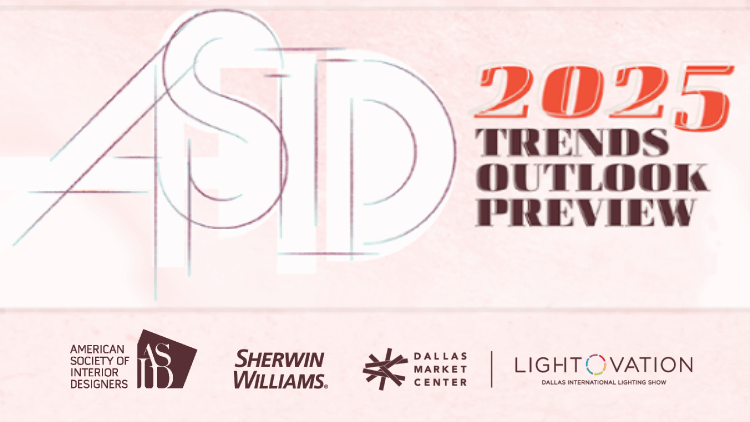
The American Society of Interior Designers (ASID) has released its highly anticipated 2025 Trends Outlook report, offering a deep dive into the evolving world of interior design. This year’s report examines the societal, technological, and economic shifts that are reshaping how we design our spaces. From the rise of neuro-inclusive environments to the increasing demand for smart technology and sustainable materials, interior design is no longer just about aesthetics—it's about creating spaces that enhance well-being, efficiency, and connection.
Today’s design trends go beyond looks. They reflect our changing lifestyles, values, and even the way we work and interact with each other.
Let’s explore the key insights shaping the future of interior design.
A Workplace for Every Generation
The workforce is evolving, with Baby Boomers, Gen X, Millennials, and Gen Z now working side by side. Gen Z, in particular, is bringing a fresh perspective, prioritizing entrepreneurship, work-life balance, and alternative career paths.

With 75% of Gen Z planning to start their own business, workplaces are adapting to new, flexible environments that support creativity and collaboration.
To accommodate this shift, office spaces are becoming more adaptable, incorporating flexible layouts, multipurpose areas, and even wellness zones designed to reduce stress and improve productivity. Companies are also embracing «reverse mentoring,» where younger employees share their digital expertise with older colleagues, fostering cross-generational learning.
Neuro-Inclusive Spaces: Designing for Well-Being
Interior design is increasingly focused on supporting both mental and physical health. By integrating insights from neuroscience, designers are crafting environments that promote calmness, focus, and emotional well-being. This is particularly important in workplaces, schools, and healthcare settings.
Key elements of neuro-inclusive design include:
- Circadian lighting that adjusts to support natural sleep rhythms
- Noise-reducing materials to minimize distractions
- Toxin-free and hypoallergenic materials for improved air quality
As consumers become more aware of how their surroundings affect their health, demand for wellness-driven interiors is growing.
Blending Tradition with Modern Sensibilities
A wave of nostalgia is sweeping through interior design, with a renewed appreciation for handcrafted details, antique furnishings, and cultural storytelling. However, this is not about pure vintage revival—designers are blending old and new, creating spaces that feel both timeless and contemporary.
- Expect to see more trims, tassels, and intricate woodwork reimagined in modern settings.
- Sustainable craftsmanship is at the forefront, with a focus on upcycling and repurposing materials rather than mass production.
By incorporating history into modern design, spaces gain depth, meaning, and a sense of continuity.
Bringing the Outdoors In
The boundary between indoor and outdoor spaces continues to blur, with more homeowners and designers incorporating nature into their interiors. Outdoor kitchens, open-air dining areas, and garden-inspired living rooms are becoming mainstream, offering both aesthetic appeal and mental health benefits.
New materials are making this transition even smoother—weather-resistant fabrics now boast indoor-level softness, and energy-efficient glass allows for expansive windows without sacrificing insulation.
Connecting with nature isn’t just a trend—it's a fundamental shift in how we think about comfort and well-being.
Smart Tech: The Future of Functional Design
Technology is now seamlessly woven into interior design, with AI-driven home automation, energy-efficient appliances, and smart security systems becoming standard.
- Homeowners are prioritizing features like voice-controlled lighting, automated climate control, and integrated wellness tech that monitors air quality and adjusts lighting to support circadian rhythms.
- In commercial spaces, AI is revolutionizing guest experiences, from personalized hotel room settings to automated restaurant ordering systems.
As technology becomes more intuitive, it enhances convenience and efficiency without disrupting the aesthetic harmony of a space.
What’s Next for Interior Design?
The ASID report paints a clear picture: interior design in 2025 is about adaptability, inclusivity, and sustainability. Whether through the integration of smart technologies, the embrace of neuro-inclusive principles, or the return to handcrafted traditions, the future of design is about more than just style—it's about creating spaces that truly enhance our lives.

